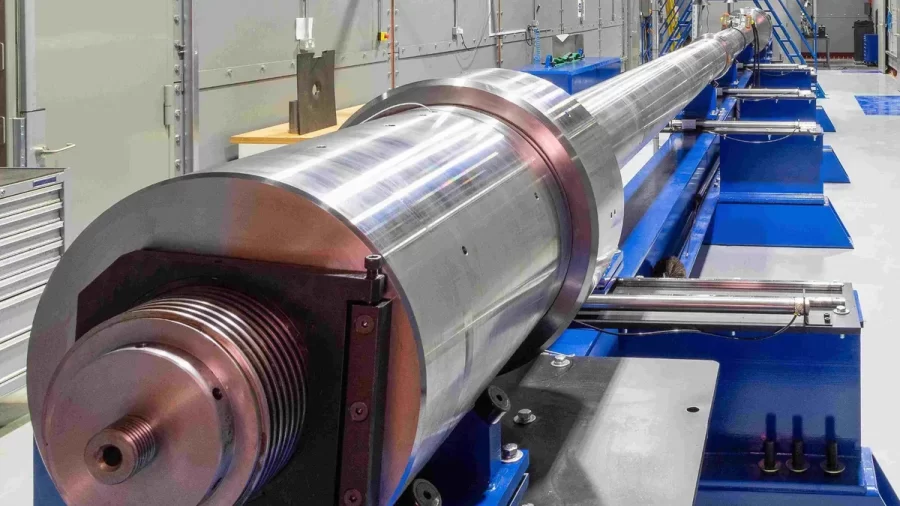Nuclear Fusion Gun built by UK Startup Can Fire a 1 Billion-G Projectile
A Big Friendly Gun gives a new way to achieve fusion.
https://images.interestingengineering.com/1200×675/filters:format(webp)/2022/11/08/image/jpeg/Ya4sJYaRkWiYngTT2CWgZts3MdZkLz7r9NlKaKRy.jpg
A New Way for Power
First Light Fusion, a UK startup, is developing a prototype called BFG (Big Friendly Gun), to try and achieve nuclear fusion without the use of lasers and powerful magnets. Recently, the company performed a test-fire of the BFG at its facility in Oxford, according to a Newsweek report.
Fusion of nuclei is the same process which our sun produces its energy, and many scientists and researchers have been trying to harness it for decades. Companies like Bill Gates-backed Commonwealth Fusion Systems (CFS) have been developing tokamak nuclear reactors which could, in theory, produce nearly limitless energy with zero emissions.
However, commercially viable nuclear fusion is still some way off, as there are several major problems to overcome. One thing is the use of incredibly powerful magnets to control the plasma used for nuclear fusion. First Light Fusion has taken an entirely different path which requires no magnets at all.
How to Fuse
First Light Fusion’s BFG is a $1.27 million steel gun that fires a high velocity projectile with 6.6 lbs of gunpowder. A piston compresses hydrogen gas before it enters a cone segment that crushes the gas and forces it through a tiny hole. The piston then smashes through a metal seal, shooting a projectile at 4.3 miles (6.9 km) per second into a vacuum chamber, where it hits a falling nuclear fusion fuel pellet. This process, which is inspired by the pistol shrimp, momentarily produces the conditions required for nuclei to fuse together.
First Light Fusion calls its approach inertial fusion. The company claims it is closer to being able to get net energy production, the production of more energy than it consumes, than tokamak reactors. In April, they announced that they had achieved fusion, stating that it achieved the breakthrough “faster and cheaper than traditional fusion approaches.
“Net energy gain has been demonstrated with inertial fusion, but the driver, instead of being a laser, was an underground weapons test,” CEO Nick Hawker told Newsweek in an interview. “So there is that empirical proof there that you can get to high energy gain with inertial fusion.” However, Hawker does admit that First Light Fusion’s work wouldn’t have materialized without the knowledge the industry gained through problems in tokamak reactors.
Hawker compares magnetic fusions with a furnace, saying that “magnetic fusion is like a furnace. It’s an always-on hot process because the particles are going around the donut. Whereas inertial fusion is more like an internal combustion engine. It’s a pulsed process where you have a repetition rate and the energy per event multiplied by the frequency gives you the power.”
Hawker believes that First Light Fusion could begin producing energy commercially by some time in the 2030’s, which is the same as many tokamak fusion companies developing magnetic fusion. The company is currently developing its next machine, called M3, which will use an electrical current to more than double the projectile’s speed to 12 miles (20 km) per second, reaching a force of 1 billion Gs.
RELATED STORIES
https://www.theregister.com/2022/04/07/first_light_nuclear_fusion/
https://firstlightfusion.com/technology/our-approach
https://firstlightfusion.com/technology/bfg
TAKE ACTION















